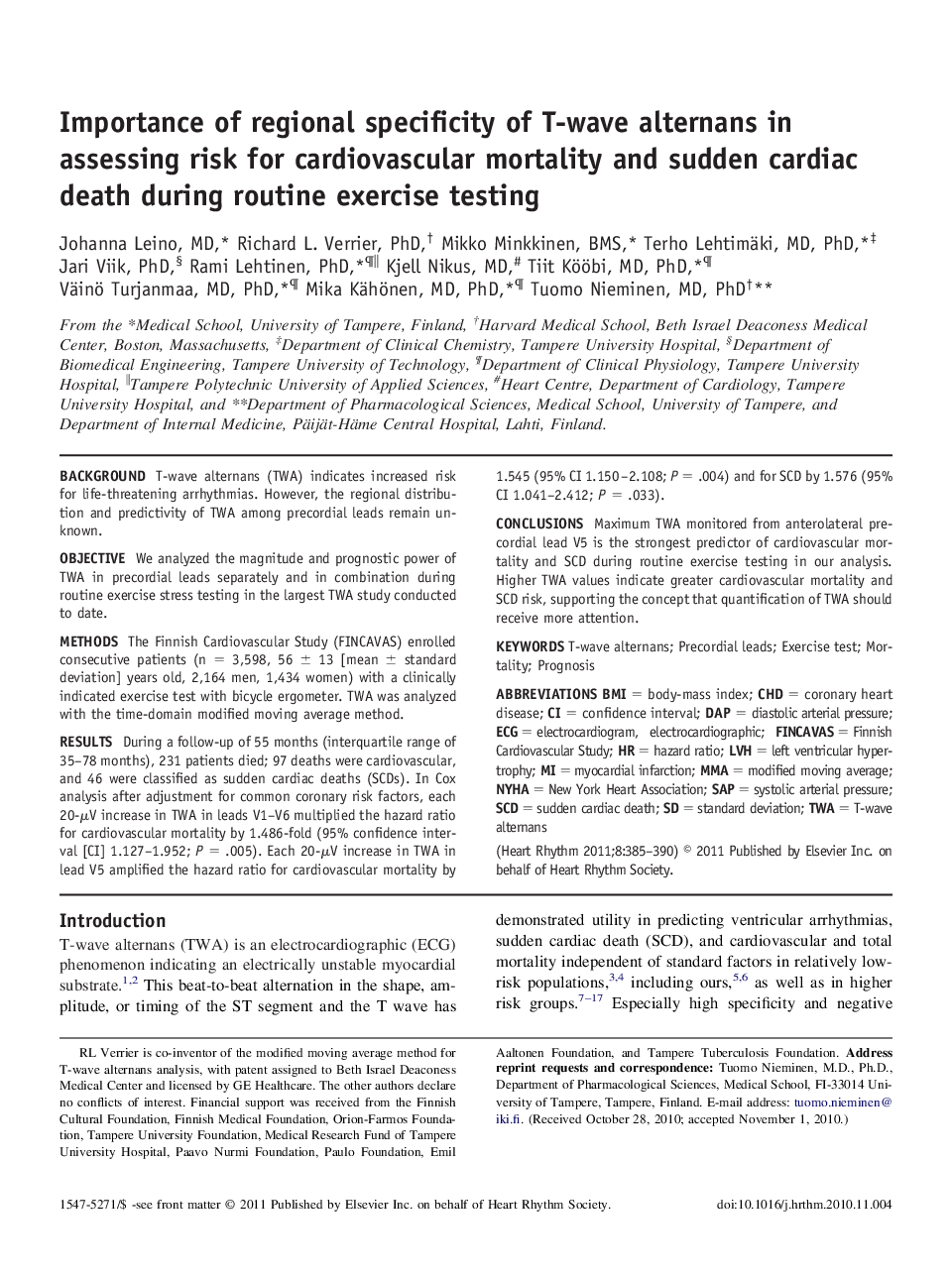| Article ID | Journal | Published Year | Pages | File Type |
|---|---|---|---|---|
| 2923604 | Heart Rhythm | 2011 | 6 Pages |
BackgroundT-wave alternans (TWA) indicates increased risk for life-threatening arrhythmias. However, the regional distribution and predictivity of TWA among precordial leads remain unknown.ObjectiveWe analyzed the magnitude and prognostic power of TWA in precordial leads separately and in combination during routine exercise stress testing in the largest TWA study conducted to date.MethodsThe Finnish Cardiovascular Study (FINCAVAS) enrolled consecutive patients (n = 3,598, 56 ± 13 [mean ± standard deviation] years old, 2,164 men, 1,434 women) with a clinically indicated exercise test with bicycle ergometer. TWA was analyzed with the time-domain modified moving average method.ResultsDuring a follow-up of 55 months (interquartile range of 35–78 months), 231 patients died; 97 deaths were cardiovascular, and 46 were classified as sudden cardiac deaths (SCDs). In Cox analysis after adjustment for common coronary risk factors, each 20-μV increase in TWA in leads V1–V6 multiplied the hazard ratio for cardiovascular mortality by 1.486-fold (95% confidence interval [CI] 1.127–1.952; P = .005). Each 20-μV increase in TWA in lead V5 amplified the hazard ratio for cardiovascular mortality by 1.545 (95% CI 1.150–2.108; P = .004) and for SCD by 1.576 (95% CI 1.041–2.412; P = .033).ConclusionsMaximum TWA monitored from anterolateral precordial lead V5 is the strongest predictor of cardiovascular mortality and SCD during routine exercise testing in our analysis. Higher TWA values indicate greater cardiovascular mortality and SCD risk, supporting the concept that quantification of TWA should receive more attention.
